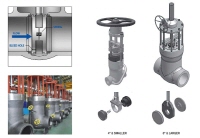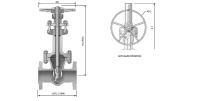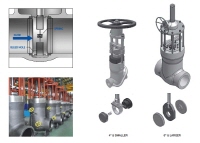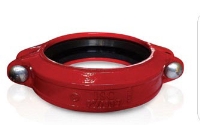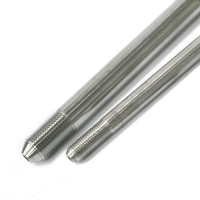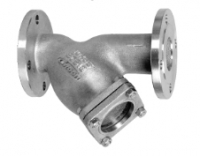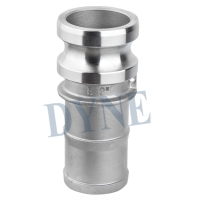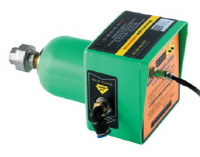|
1. PRESSURE SEAL VALVES Production Materials | |||||||||||||||||||||||||||||||||||
| |||||||||||||||||||||||||||||||||||
|
Construction
| |||||||||||||||||||||||||||||||||||
 | |||||||||||||||||||||||||||||||||||
|
Features and benefits The parallel slide gate assembly consists of two interchangeable spring
loaded discs, a fully guided disc Springs are fitted between discs to provide initial sealing force only, and
do not maintain the sealing force. Discs are interchangeable which simplifies in-line maintenance and eliminates
the need to custom fit the Position seating eliminates stress and potential binding due to thermal
expansion of the stem. No additional torque required to achieve a positive seal once disc are in
position. Lower seating torque to reduce actuator size and cost. Hardfaced seating surfaces provide high cycle capability in very high
differential pressure services. By-pass valves are used to reduce the traversing differential pressure across
the valve seat. Equalizing devices are used to relieve the fluid trapped between the seat forces, and to provide an outlet for the fluid displaced by the valve stem traversing to the shut position. | |||||||||||||||||||||||||||||||||||
| |||||||||||||||||||||||||||||||||||
|
|
상세설명
판매자에게 연락하기
업체명
0503-0000-0000
위 번호로 통화하여 제품정보를 확인하실 수 있습니다
견적 요청하기
로그인 후 이용가능합니다
견적 상세보기
로그인 후 이용가능합니다



